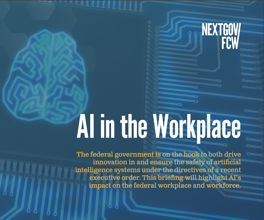Cloud Computing Stymies Digital Forensics Investigations

winui/Shutterstock.com
Investigators sift through bits and bytes to solve crimes, but cloud presents challenges
In recent years, cloud computing has made the leap from an emerging technology to government mainstay, allowing agencies an IT avenue to share services, save money and increase efficiency.
However, cloud computing still presents some major technical challenges in government, as illustrated by a recent draft report issued by the National Institute of Standards and Technology.
Prepared by the NIST Cloud Computing Forensic Science Working Group, the report summarizes a staggering 65 challenges cloud computing presents to forensics investigators who sift through bits and bytes of digital evidence to solve crimes.
The challenges are technical, legal and organizational, according to NIST’s Martin Herman, co-chair of the working group. They can be further classified among nine categories, including architecture, data collection, analysis, standards, training and "anti-forensics" such as data hiding and malware.
Herman said the long-term goal from the research is to build a better understanding of the “high-priority challenges” in cloud forensics so the public and private sectors can effectively respond.
“We want to determine what the gaps are in technical challenges and standards,” Herman told Nextgov. "We need to be able to overcome those challenges, and maybe we at NIST can start working on some of it.”
With cloud computing becoming more popular – many agencies, for example, now use cloud computing for email – scenarios in which the cloud might muck up an investigation are plentiful. For example, in a typical computer system, when a user deletes a file, the user isn’t actually deleting the information -- only the digital “pointers” to the file, according to Herman. Data isn’t really deleted until the physical hard drive or storage disk is overwritten with other data. Traditional forensics teams routinely recover files – including deleted files – using fairly well-known tools.
Because the cloud can be a shared, multitenant environment, servers and storage devices can be shared among many different customers. That means, Herman said, there is a higher likelihood deleted data will be overwritten.
“It may be much more difficult to recover data from storage areas,” Herman said.
In addition, clouds often keep copies of data and automate where data is stored, meaning information contained without a cloud environment doesn’t stand still for long. This fluidity of data poses more challenges for forensics investigators who – before they can do anything – need to know where to physically look for information. Other challenges involve what happens to data contained within provisioned virtual machines when they are deleted, as well as new wrinkles posed by the proliferation of more computing and mobile devices that can access and compute information in the cloud.
“We need to, as a community, be looking at these challenges,” Herman said.
The draft report will receive public comments before it is presented as a final report.
(Image via winui/Shutterstock.com)
NEXT STORY: State's passport and visa system crashes



